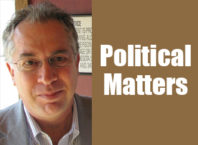 The rhetoric is escalating in the
The rhetoric is escalating in the
run-up to the Minnesota-Washington NFL game. A new stadium is under
construction downtown on the site of the former Metrodome, so the
Vikes are playing their games at TCF Bank Stadium (“the Bank”) on
the University of Minnesota campus.
As the Washington Post reported in
early August, the Bank complex features a Tribal Nations Plaza, which
honors “the 11 Native American tribes in Minnesota. It was built
with a $10 million donation from the Shakopee Mdewakanton Sioux
Community — the largest private gift ever to Gophers athletics.”
Last month, tribal officials released a statement expressing
opposition to the Redskins’ name “and other sports-related logos,
mascots and names which degrade a race of people,” according to the
newspaper. The Shakopee band and other Minnesota Indian bands are
working with the university to prepare “appropriate responses” to
the NFL game and “minimize the damage that could be done by
invoking the [“R”] name in a place that respects and honors the
Minnesota Native American community.”
American Indian Movement (AIM) leader
Clyde Bellecourt has threatened to organize mass civil disobedience
to stop the Nov. 2 game, if Washington comes here with the Redskins
name and logo. Bellecourt, who is the director of the National
Coalition on Racism in Sports and Media, also has threatened to sue
the University of Minnesota if the Washington franchise doesn’t
tone it down. The coalition organized a large march to the Metrodome
last November, when Washington visited Minneapolis for a
nationally-broadcast Thursday Night Football game.
For their part, U of M officials say
they have no control over what the Vikings do in the leased stadium;
but they have requested that Washington wear throwback jerseys that
don’t feature the team name or logo, for the Nov. 2 game with the
Vikings. The university also has asked that public address announcers
not utter the word “Redskins,” and that the epithet not appear on
the scoreboard or program guide for the game. Likewise, the U of M
does not want Washington selling jerseys and souvenirs with the
demeaning name and logo at the Bank.
Katrice Albert, the college’s vice
president in the office of equity and diversity, has stated that
Vikings officials have been receptive to the U of M requests,
according to news reports.
Mount Polley and Minnesota
As a final environmental impact
statement is being prepared for the proposed PolyMet copper-nickel
mine in northeastern Minnesota, a major waste spill occurred at the
Mount Polley sulfide mine in central British Columbia.
In early August, a tailing pond
containment was breached, and 10 million cubic meters of contaminated
mine waste water spilled into Hazeltine Creek. News reports out of
the province dubbed this the “worst environmental disaster in
British Columbia’s history.” A water ban affected about 300 local
residents in the rural area, where much of economy is based on
tourists flying in to fish.
A CBC report last month said that
waterways affected by the ban had been expanded to include the entire
Quesnel and Cariboo river systems “right up to the salmon-bearing
Fraser River. Authorities are asking people in the region to stop
using water from both rivers.”
There’s a YouTube video which shows
the extent of this major mine waste spill at: bit.ly/sulfide-mess.
Mining Truth, the Minnesota environmental coalition campaigning
against PolyMet’s proposed NorthMet project, stated: “The Mount
Polley mine in British Columbia was a state of the art, modern copper
mine that had been touted as a shining example of how sulfide mining
can co-exist with clean water. Now, the head scientist at Vancouver
Aquarium’s ocean pollution research program says it is ‘virtually
impossible to clean up’ the mess left behind after this
catastrophe.”
It seems that PolyMet, the Minnesota
Department of Natural Resources, and the other agencies involved in
the NorthMet environmental review should examine how the Mount Polley
spill occurred.
Imperial Metals, the Canadian firm
that owns the Mount Polley mine, assured the public that its Mount
Polley facility develops a “comprehensive environmental monitoring
plan on an annual basis. This plan includes surface and groundwater
quality monitoring, lake profiling and sampling, dust fall
collection, biological monitoring, and wildlife monitoring.” The
mining firm’s website also features come claptrap about its
involvement in the “Toward Sustainable Mining (TSM)” program,
with its “globally recognized environmental practices, and a
commitment to the safety and health of employees and surrounding
communities.”
The Mount Polley disaster is a graphic
illustration of the potential dangers of copper-nickel mining. We
can’t say that we haven’t been warned.





